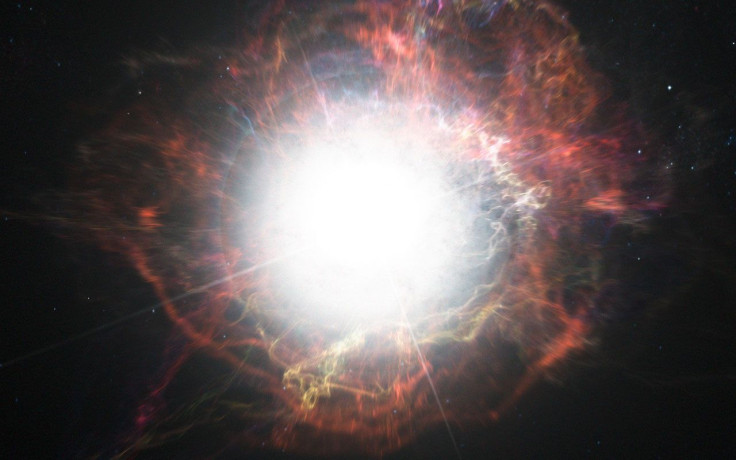Supernova Helps Scientists Solve Mystery Of Cosmic Dust Formation

Astronomers have used a powerful ground-based telescope to solve the mystery of how cosmic dust, which ultimately leads to the formation of planets, is created and how it withstands the harsh environment of a star-forming galaxy.
Although astronomers know that a supernova may be the primary source of space dust, it is still unknown how cosmic dust grains condense and grow. The astronomers used the Very Large Telescope, or VLT, operated by the European Southern Observatory, or ESA, in Chile, to observe for the first time the formation of cosmic dust in real time during the aftermath of a supernova explosion. The results were published in the journal Nature on Wednesday.
“By combining the data from the nine early sets of observations we were able to make the first direct measurements of how the dust around a supernova absorbs the different colours of light,” Christa Gall from Aarhus University in Denmark and the study’s lead author said, in a statement. “This allowed us to find out more about the dust than had been possible before.”
The astronomers observed a supernova -- which is the explosion of a giant star and can shine as brightly as 10 billion suns -- called SN2010jl at different times after its explosion at both visible and near-infrared wavelengths, and found that the dust began to form soon after the blast and continued to do so over a long period of time.
In addition, the astronomers also found that the dust grains were larger than one thousandth of a millimeter in diameter and formed rapidly in the dense material surrounding the dying star. While the grains' size is tiny by human standards, it is considerably large for a grain of cosmic dust, astronomers said, adding that this “surprisingly large size” helps them survive destructive processes in space.
According to the astronomers, the new discoveries build on previous observations made by the Atacama Large Millimeter/submillimeter Array, or ALMA, of remnants of the supernova 1987A, or SN 1987A. ALMA first detected the remains of the supernova brimming with newly formed dust but astronomers could decode very little information about how the dust was formed.
“Our detection of large grains soon after the supernova explosion means that there must be a fast and efficient way to create them,” Jens Hjorth from the Niels Bohr Institute of the University of Copenhagen, Denmark, and the study’s co-author, said in the statement.
How Did They Form?
Astronomers believe that the new dust grains formed in material shed into space by the dying star before the explosion. As the tremor from the supernova expanded outwards, it created a cool, dense shield of gas ideal for the dust grains to thrive.
“At this temperature and density elements can nucleate and form solid particles. We measured dust grains as large as around one micron (a thousandth of a millimeter), which is large for cosmic dust grains. They are so large that they can survive their onward journey out into the galaxy,” Gall told Discovery News.
© Copyright IBTimes 2024. All rights reserved.






















